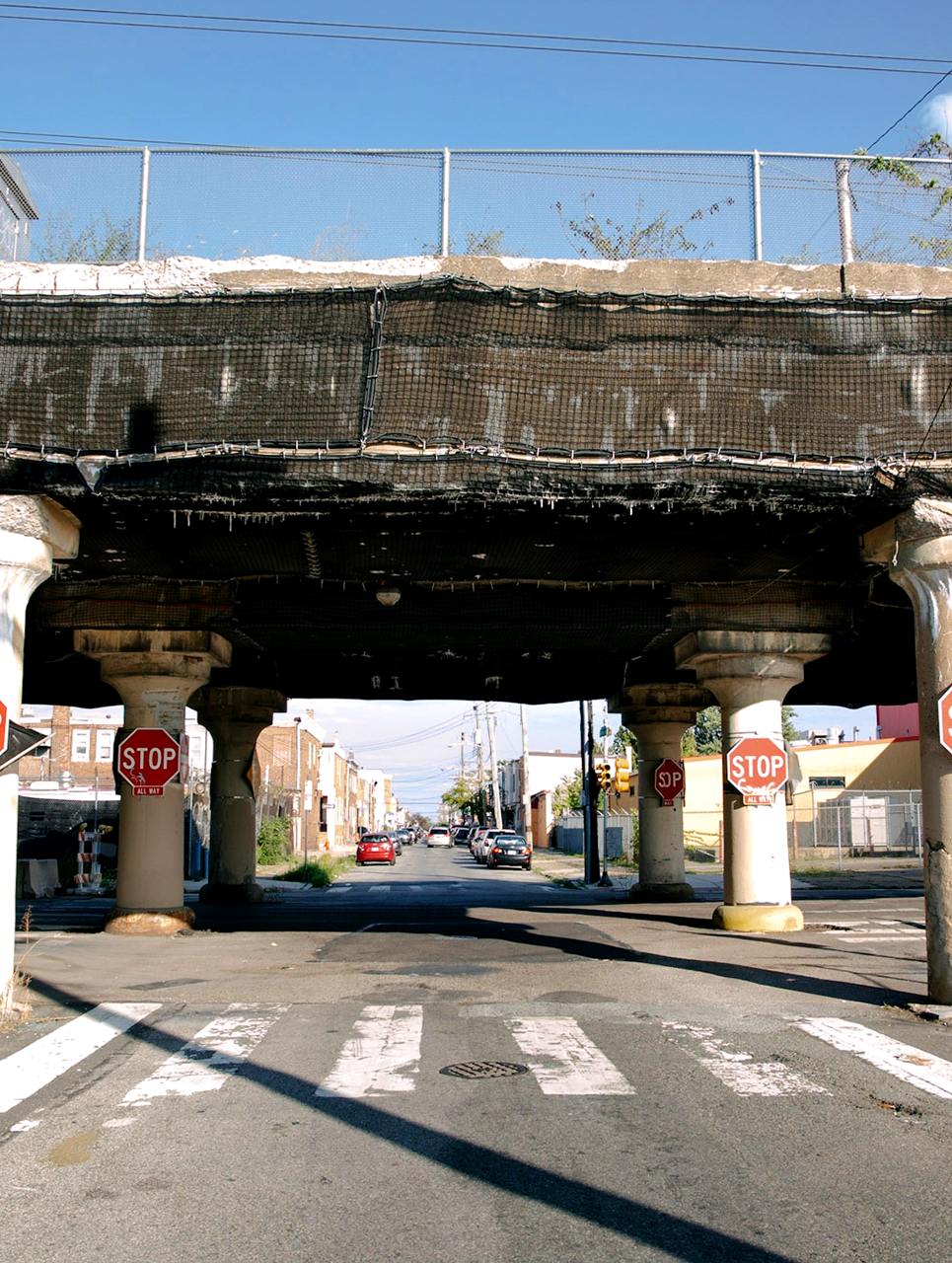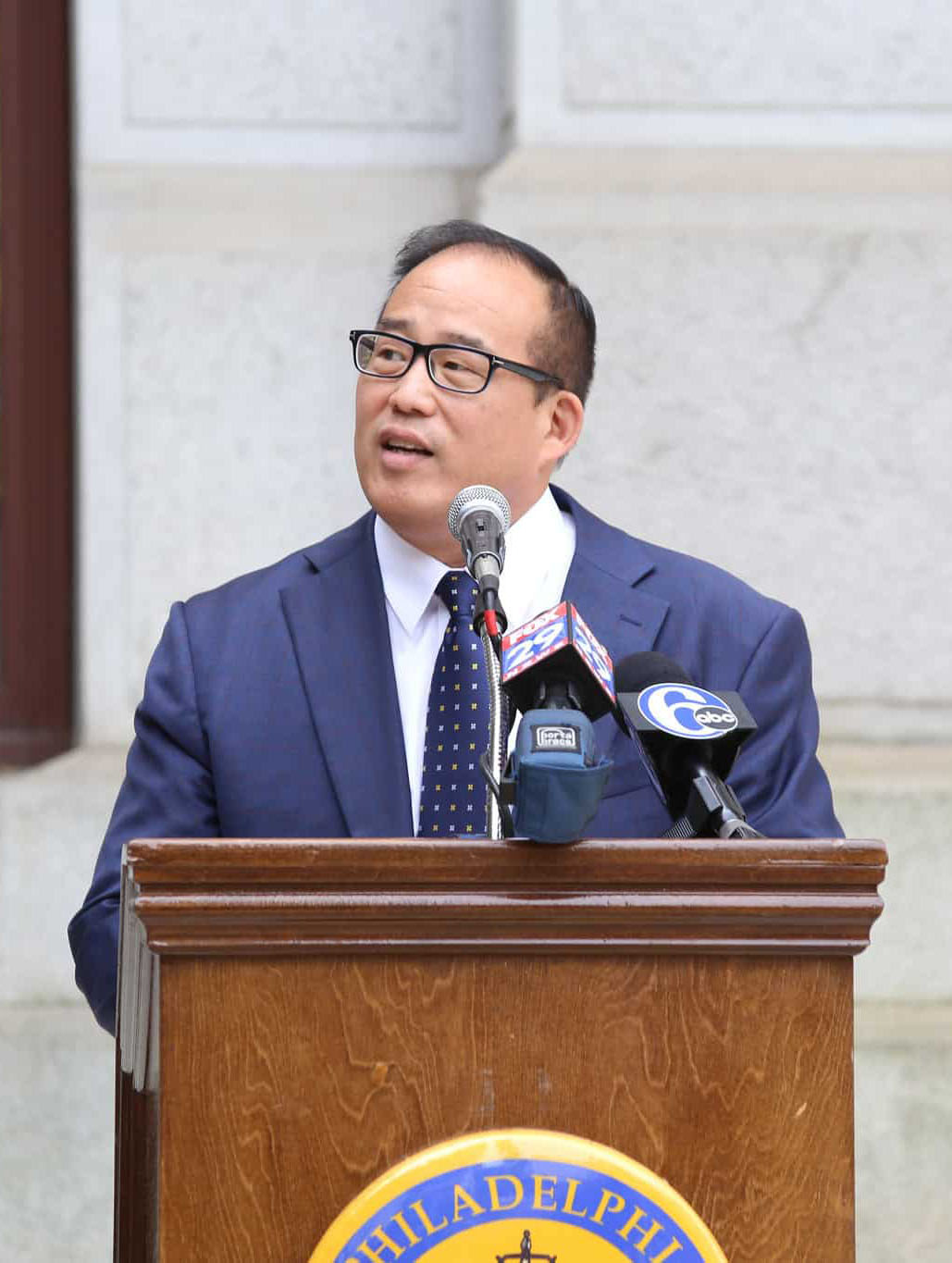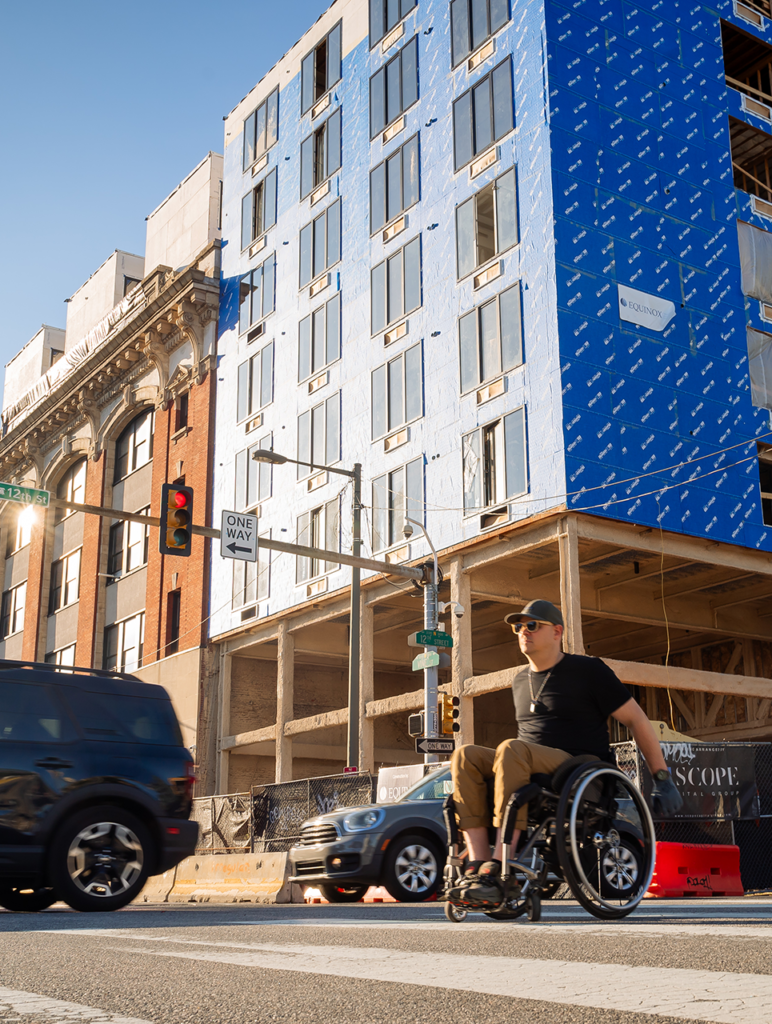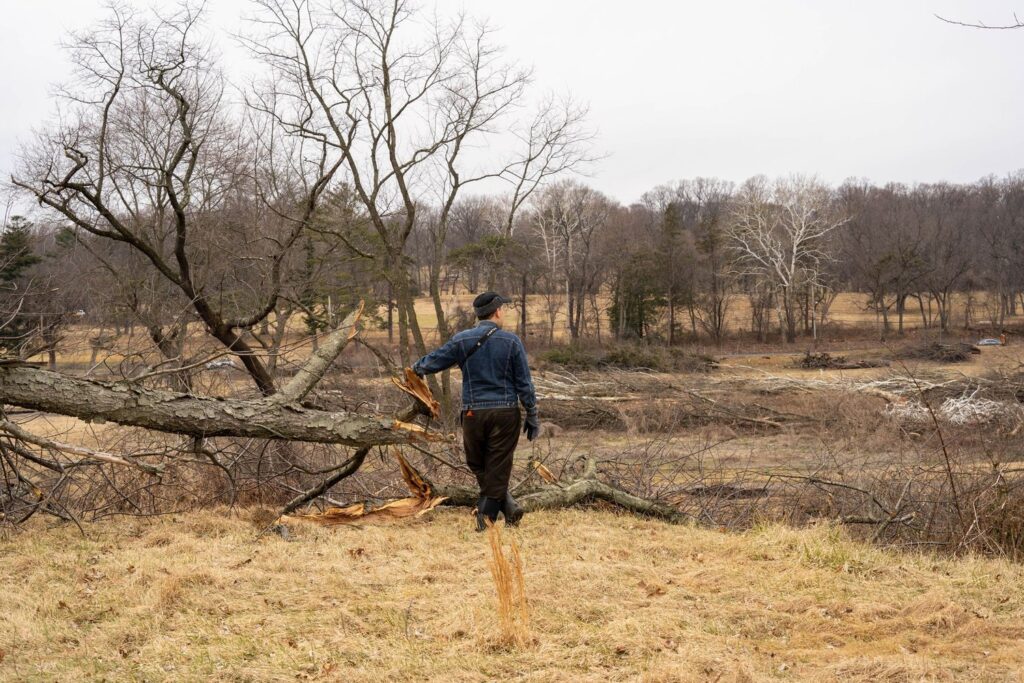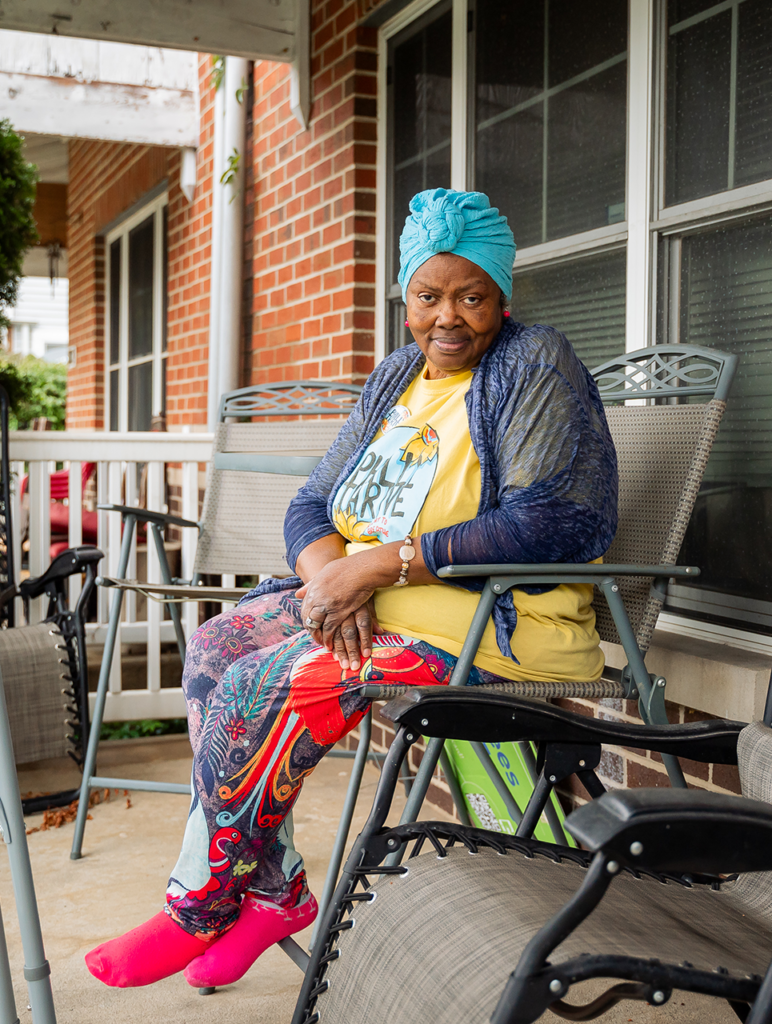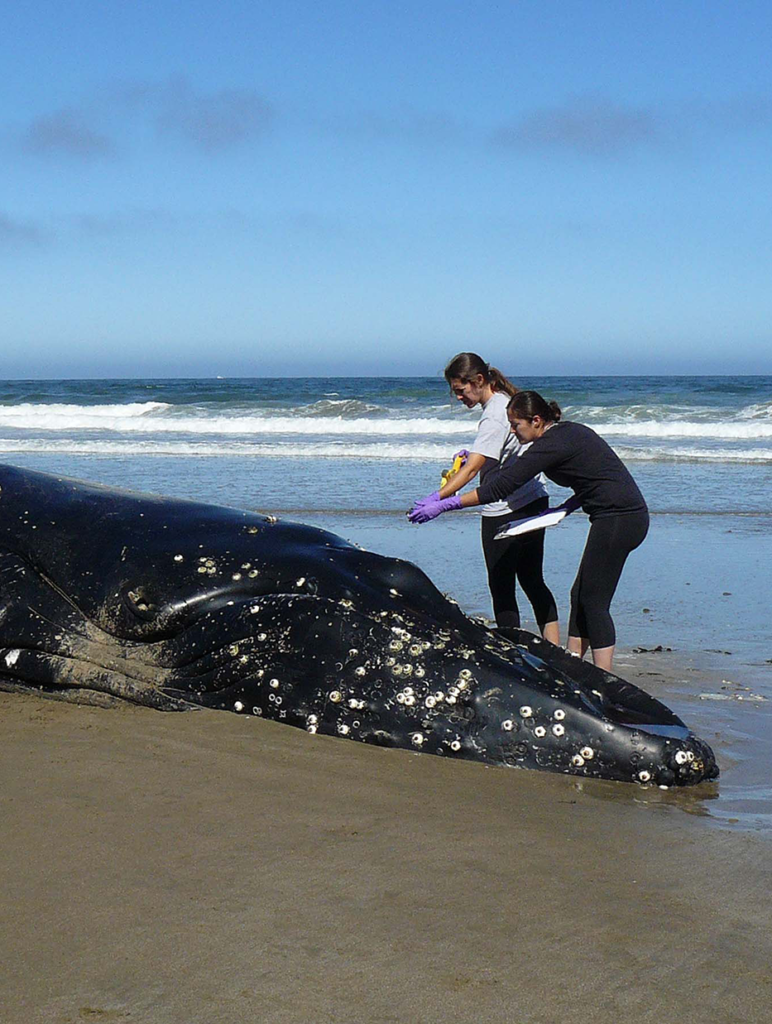
First came the heavy rains. Then came the derailed train.
On the morning of July 17, the Delaware Valley held its collective breath as reports came in that a freight train had derailed in Whitemarsh Township, a few miles from Philadelphia’s northwest border. The train carried rail cars containing hazardous materials and residents were evacuated from nearby homes as officials raced to assess the danger.
Fresh in mind was the high-profile train derailment and subsequent leakage of toxic substances from a train in East Palestine, Ohio, earlier this year. Although there have been conflicting scientific analyses of the level of danger to the public, residents of the town widely reported symptoms including asthma, nausea and headaches they believe are tied to exposure.
Fortunately, the fallout in Whitemarsh was less catastrophic: officials said the only spilled material was plastic pellets. One derailed car was carrying tetrachloroethylene, a hazardous substance the Centers for Disease Control and Prevention (CDC) notes can cause face, skin and respiratory system irritation and “may” cause liver damage and cancer. But that car stayed intact.
By afternoon, the precautionary evacuation was lifted and residents returned home. Officials with Norfolk Southern, which owns the railway in Whitemarsh, said they initially suspect a sinkhole caused by a deluge the day before was to blame for the derailment. An official investigation is still pending, but the company will “learn” from it regardless, a spokesperson said.
The incident has since largely receded from local memory. But should it have?
A closer look at the railways that crisscross Philadelphia and interviews with rail industry and emergency response experts suggest not. According to David Nitsch, director of the Emergency and Disaster Management master’s program at Thomas Jefferson University, that’s because a significant freight train derailment in the heart of the city represents one of the worst possible disasters the city could face.
Whenever a public safety incident occurs, Nitsch says, the first priority is ensuring the safety of human life, then stabilizing the situation, then securing the environment. But when a safe evacuation would call for the movement of potentially tens or even hundreds of thousands of people — many who may have physical mobility problems or don’t own a car — in an extremely short time period, the logistics become impossible.
“You take East Palestine and plunk it down at 30th Street Station — that is a doomsday, nightmare scenario,” Nitsch says. “The real simple answer is there’s no good way around that … I tip my hat to emergency managers.”
For their part, officials with the City of Philadelphia say its Office of Emergency Management has adopted an “all-hazards” approach to public safety incidents, now common across the profession. The governing philosophy is to build capabilities commonly needed to respond to a variety of hazards, like the truck fire that shut down I-95 earlier this year, junkyard fires or train derailments. Trainings focus on conducting evacuations, responding to hazardous materials, rerouting traffic and other tasks.
Armed with training exercises, planning documents and partnerships with a slew of local, state and federal agencies, the City says it’s prepared.
“We’re unable to give a probability to a rail incident occurring in Philadelphia, same as we would not give a probability to a hurricane or terrorist attack occurring in the City,” Jeffrey Kolakowski, a spokesperson for Emergency Management, wrote in an email. “It could happen, and so we prepare for it; we maintain a constant vigilance to understand the risks in Philadelphia, the tactics to address those risks and the relationships necessary to manage those risks.”
The dangers of rail
Despite the City’s assurances that it’s prepared for a major train derailment, some don’t feel safe.
Russell Zerbo, an advocate with the Philadelphia-based environmental nonprofit Clean Air Council, says that he recently attended an event at a park in Grays Ferry along the 25th Street corridor. An elevated freight line owned by the rail transport company CSX runs parallel over the busy roadway for more than a mile. Zerbo looked up at the line as a freight train rolled by.
“It said ‘hydrochloric acid’ on the side,” Zerbo says, naming a chemical that can vaporize and cause skin, eye and respiratory irritation, as well as burns and pulmonary edema, according to the CDC. “If the train derailed, it would land on a car … there’s no buffer … it’s literally on top of you.”
Adding to his concern, Zerbo says, is the fact that Philadelphia filed a formal complaint with the Pennsylvania Public Utility Commission in July 2022 over the condition of the viaduct above 25th Street. First constructed in 1914, the rail line was also subject to a 2005 complaint in which CSX was required to take several steps to repair the deteriorating structure. But the company failed to advance past the first stage, the City alleged in 2022, skipping inspections, forgoing repairs and allowing cracked and spalling concrete to fall and endanger passersby below.
“In this state of disrepair, the viaduct constitutes a danger to the health, safety and welfare of residents,” the complaint stated, also claiming CSX officials told the City they did not plan on making additional repairs because the company, “did not want to incur the cost.”
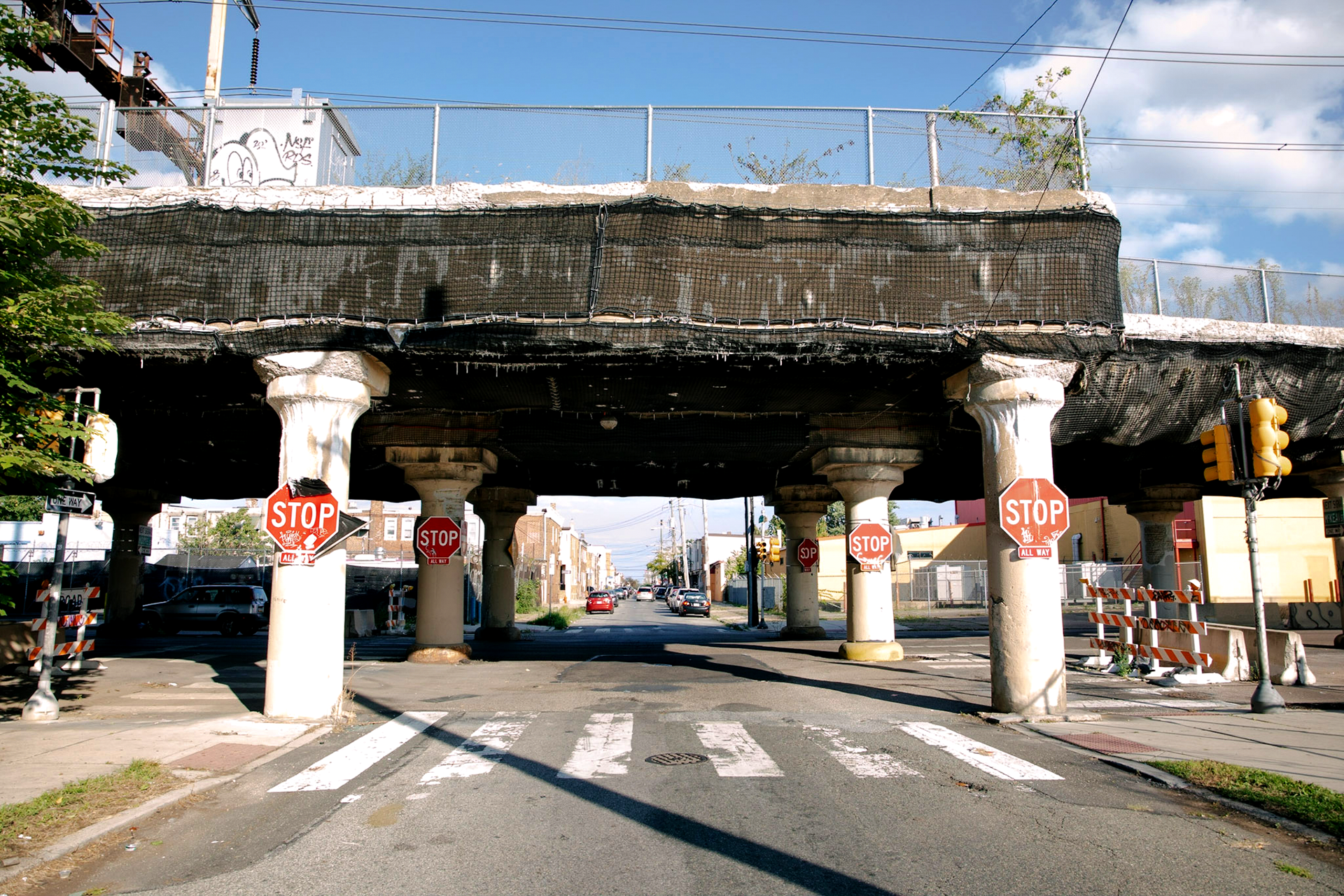
CSX told local media at the time that it received a grant to facilitate repairs on the viaduct and that the structure had passed an inspection in 2021. In addition, Kolakowski says the City views the filing of the complaint as a “relatively isolated incident” for railways in the city.
But Paul Pokrowka, Pennsylvania state legislative director for the International Association of Sheet Metal, Air, Rail and Transportation Workers, aka SMART, a union that represents rail workers across the country, says he believes the problem is indicative of a wider trend afoot on U.S. railways. Over the last 20 years, Pokrowka says, the industry has undergone a transformation by reducing its workforce, creating longer trains than ever and otherwise attempting to squeeze more profits out of its business model — to the detriment of safety for workers and the public.
“I’m not just coming from the perspective of jobs. It’s a public safety issue now, and I think the truth is it’s unraveling every day,” Pokrowka says.
Surveying the landscape of the country’s railways, one doesn’t have to look very hard to find signs of trouble. Last December, the U.S. Government Accountability Office (GAO) reported that six of the seven largest U.S. freight railroads have implemented “precision-scheduled railroading,” a logistical practice designed to increase efficiency and reduce costs.
According to industry professionals interviewed by the GAO, the practice involves cutting staff, creating longer trains and reducing assets such as locomotives. Between 2011 and 2021, staffing among the seven largest railroads fell about 28%.
They’ve shaved everything so hard in the name of profit, that there’s nowhere else to go, and now the public is seeing the effects.”
— Paul Pokrowka, SMART union
Pokrowka says this caused myriad impacts across rail operations, such as lower levels of track maintenance, car maintenance, operational training and ultimately, safety.
“They’ve shaved everything so hard in the name of profit that there’s nowhere else to go,” Pokrowka says. “And now the public is seeing the effects.”
Pokrowka’s view was echoed by many following the derailment in East Palestine. An April report in The New York Times noted Norfolk Southern’s workforce had dropped 39% since 2012, a bigger decline than its peers, while its accident rate increased by 80% and its injury rate for employees also rose. The National Transportation Safety Board opened a special investigation into the company’s “safety practices and culture” earlier this year.
Still, the GAO report noted that Federal Railroad Administration officials said national safety data among all rail companies from 2011 to 2021 is “inconclusive about the extent to which operational changes” associated with precision-scheduled railroading “may have affected rail safety.”

Rail companies also claim they’ve turned a corner. Connor Spielmaker, senior communications manager for Norfolk Southern, says the company had fewer derailments in 2022 than any other year over the past decade.
“Since 2019, our total number of accidents has dropped by 16%, and the number of accidents on the heaviest trafficked routes on our network has dropped by 25%,” Spielmaker says.
Joseph Palese, a civil engineer and scientist at the University of Delaware, who worked for railroads for 35 years, says he believes the industry unfairly gets a bad rap. Specifically, he says the rail companies have worked with regulators to implement new standards, such as safer, puncture-resistant hazmat cars and positive train control, a technology that automatically slows down trains to eliminate human error.
In general, he says companies maintain a safety-first mindset, often doing more than regulations require and accumulating a safety record better than other freight transportation methods like box truck transportation.
“Yes, [accidents] are unfortunate and can sometimes happen, but it’s a safe way to transport these goods,” Palese says.
Where do trains run in Philly and what do they carry?
It’s essentially impossible for the public to assess exactly how much risk they face from freightlines moving through the area. That’s because the specific details of a train line and its regular cargo — from whence trains originate, where they’re heading and what they’re carrying — are not privy to the public.
The Pennsylvania Department of Transportation does provide a map of the rail lines, which shows two large Norfolk Southern lines passing through the region. Entering from the west, one loosely follows the path of the Pennsylvania Turnpike from Norristown, across Montgomery County, and into Bucks. The other follows the Schuylkill River into East Falls. From there, it connects with CSX lines: one cuts northeast across the city loosely following Route 1 and the other continues to follow the Schuylkill River, becoming the 25th Street viaduct before looping around South Philly.
Freight also moves across other lines that share traffic with SEPTA, meaning hazardous cargo can move along numerous stretches of the city with the public generally unaware.
It’s just absurd that hydrochloric acid is allowed to go up and down an elevated railway bridge that is widely known to be insecure.”
— Russell Zerbo, Clean Air Council
“You would be hard pressed to find a larger population that deals with this level of industry,” Zerbo says. “It’s just absurd that hydrochloric acid is allowed to go up and down an elevated railway bridge that is widely known to be insecure.”
Rail accident data housed by the Federal Railroad Administration show a bell-shaped curve for incidents on Norfolk Southern Lines in Montgomery County over the past dozen years. There was just one incident in 2010, a peak of eight in 2014, and then a slow descent to two in 2021 and one in 2022. The nine deaths that have occurred since 2000 are all listed as having been trespassers.
The same is true of Philadelphia. Within the city, data show, accidents on the CSX lines peaked in 2015 with 13, and fell to four so far this year, although one employee was killed in 2013.
The Federal Railroad Administration says the July accident in Whitemarsh is under investigation. Both Norfolk Southern and CSX, which owned the train that derailed, had to submit accident reports within 30 days, which are typically made available to the public after several months. The administration will then issue its own findings, usually within six months of the accident.
For those with ongoing concerns over rail safety, Kolakowski says city residents can sign up to receive ReadyPhiladelphia emergency alerts by texting “READYPHILA” to 888-777. He also suggests personalizing text or email alerts for locations and info important to them and becoming familiar with other emergency preparation tips by visiting Emergency Management’s website at phila.gov/ready.
Pokrowka, with the SMART union, also points toward Pennsylvania House Bill 1028. Introduced in the wake of the East Palestine derailment, the bill would limit train lengths to 8,500 feet and require at least two-person crews on the most significant class of railways. It would also create new rules for safety equipment and require the study of regulations regarding the transportation and reporting of shipments of hazardous waste.
The bill passed the House with a bipartisan 141-62 vote in June and is now in committee in the Republican-controlled State Senate. Pokrowka believes such legislation will always be a target of industry lobbying and is urging residents to call their politicians to offer support for passage, especially in the wake of the recent derailments.
“It’s not the first time we’ve been pushing this,” Pokrowka says, adding that groups have been advocating for a similar bill for about a decade. “It’s time for the Senate to get it on the governor’s desk.”

